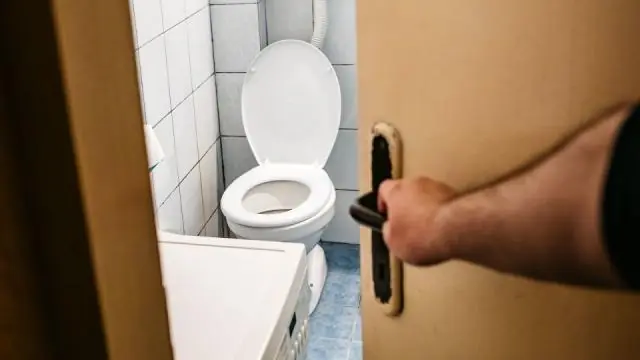
Drought Reveals “Spanish Stonehenge” Older Than the Pyramids.
Drought Reveals “Spanish Stonehenge” Older Than the Pyramids
Wednesday, April 14, 2023 | Ancient | 136,399 Views
The Mysterious “Spanish Stonehenge” Emerges After 50 Years of Submersion
After being submerged for over 50 years, a remarkable prehistoric monument has reappeared in Spain due to an ongoing drought. This ancient site, known as the "Spanish Stonehenge," is older than the pyramids and offers new insights into ancient rituals and engineering.
An Ancient Monument Unearthed
The Dolmen de Guadalperal, as it’s officially called, consists of 144 granite blocks, some standing over 6 feet tall. These stones, spread over a vast area, form an extraordinary megalithic site similar to the famous Stonehenge in Wiltshire, England. However, unlike its British counterpart, the Spanish version is built using smaller stones, giving it a unique character.
The monument was discovered by German priest and amateur archaeologist Hugo Obermaier in 1925. Unfortunately, the site was submerged in the 1960s when a hydroelectric dam was constructed in the Peraleda de la Mata area, near Cáceres, Extremadura. The waters of the Tagus River flooded the area, hiding the ancient structure from view for decades.
However, a severe drought in the region has caused the water level to drop, allowing the megalithic structures to resurface. For the first time in 50 years, the full extent of the site is visible again, offering a glimpse into the past.
A Ritualistic Temple for Sun Worship?
The "Spanish Stonehenge" is believed to date back between 4,000 and 5,000 years, during the Bronze Age. Local experts, like Ángel Castaño, president of the Peraleda Cultural Association, suggest that the monument could have been a temple for sun worship, similar to other megalithic sites across Europe. According to Castaño, the stones were transported from about five kilometers away to create this complex structure, with the goal of honoring the sun.
In many ways, the "Spanish Stonehenge" shares similarities with Stonehenge, particularly its role in astronomical alignment and religious ceremonies. It’s thought that the structure might have been used to track celestial movements or to serve as a center for ritualistic gatherings.
How It Compares to Stonehenge
While the Spanish site’s monoliths are smaller than those at Stonehenge—measuring only up to six feet tall compared to the towering 30-foot stones in Wiltshire—there are more stones in Spain, with 144 blocks compared to the 93 at Stonehenge. Furthermore, Stonehenge covers an area of about 10,800 square feet (10,000 square meters), much larger than the Spanish site's footprint.
The radiocarbon dating of the stones in Spain places them at around 4,000 to 5,000 years old, a striking link to the timing of Stonehenge’s construction. In fact, many megalithic structures across Europe, including those in Brittany, Catalonia, and Sardinia, share a similar age and purpose.
Threatened by Erosion and Time
Sadly, the reappearance of the "Spanish Stonehenge" may not be permanent. The prolonged submersion in water has already taken a toll on the stones, which are made of porous granite. Experts worry that, without urgent action, the site could suffer severe erosion, and these ancient relics might once again be lost to history.
Local preservation efforts are underway, with Castaño meeting with regional government officials to discuss the possibility of saving the stones and relocating them to a more protected location. However, without prompt intervention, this incredible piece of history could deteriorate beyond repair, disappearing once again beneath the waters.
The Importance of Preserving Ancient Monuments
The drought has, in some ways, provided a rare opportunity for researchers to study the monument in detail. Understanding the "Spanish Stonehenge" could help shed light on the broader spread of megalithic construction techniques across ancient Europe. Some studies suggest that these monumental stone structures were part of a cultural exchange across the continent, with early settlers from Anatolia (modern-day Turkey) spreading their knowledge of stone building to Iberia and eventually to the British Isles.
Further research into the Spanish site could give us a clearer picture of how these structures were used and their cultural significance. It also raises the question of why people across Europe were so drawn to creating such massive and intricate monuments in the distant past. The "Spanish Stonehenge" is a vital link to our collective heritage, offering insight into the ancient peoples who constructed these remarkable sites.
A Call for Preservation and Tourism
As the "Spanish Stonehenge" comes back into the light, local authorities and preservation groups are urging swift action to protect it. Some, like Castaño, even suggest that the site could become a tourist attraction if the stones are moved to a safer location. This would not only help preserve the site for future generations but also bring attention to a part of Spain’s rich historical landscape that few people know about.
Whether as an ancient temple, a cultural landmark, or a remarkable historical discovery, the reappearance of the "Spanish Stonehenge" reminds us of the fragility of our ancient heritage. It’s a powerful symbol of the need to protect these wonders for future generations to study, appreciate, and enjoy.
News in the same category


My Ex-Husband Asked Me to Be a Surrogate for Him and His New Wife - It Ended Not as He Expected

My Wife Left Me and Our Children After I Lost My Job – Two Years Later, I Accidentally Met Her in a Café, and She Was in Tears

A Promise I Couldn’t Walk Away From

In Six Months, I Gave Birth, Lost My Leg, and Fought C.a.n.c.e.r

He approached three cops and asked to pray for them.

I gave up my prom dress money to help a homeless man, and the next day he brought an unbelievable gift to prom.

No classmates attended my son’s birthday, but strangers did

My Selfish Sister Stayed by Mom's Side When She Fell Ill, but Everything Changed after the Doctor Shared Mom's Last Words

I Adopted the Oldest Shelter Dog, Knowing She Had Only a Month to Live — My Goal Was to Make It Her Happiest.

My husband traded his family for an affair — three years later, i saw them again and felt deeply satisfied.

Three of us became dads in a day—one text changed everything.

He pulled her out of a burning building—and then she never left his shoulder

HE JUST NEEDED $25 FOR A HAIRCUT—BUT WHAT HE DID WITH IT SHOOK ME

When my son innocently revealed that my husband had been secretly driving a brighter car with a woman I knew nothing about.

Why Was My Son Left Out? A Text Revealed the Truth

Three Became Fathers in a Day—One Text Changed Everything

"Unbelievable Coincidence: The Orphanage Held a Carbon Copy of Our Child!"

The Hidden Weight of Childhood: A Journey of Independence, Compassion, and Unspoken Secrets

There were cops in my yard, and as an african american family, my mind was full of negative thoughts
News Post

I Saw My MIL on TV Looking for a 'True Wife' for Her Son – I Gave Her the Revenge She Deserved

My Ex-Husband Asked Me to Be a Surrogate for Him and His New Wife - It Ended Not as He Expected

Why Smoking Weed at 30 Could Impact Your Future: What Science Says

My Wife Left Me and Our Children After I Lost My Job – Two Years Later, I Accidentally Met Her in a Café, and She Was in Tears

Top 14 Kinds of Fish You Should Never Eat

A Promise I Couldn’t Walk Away From

Frequent Nighttime Trips to the Bathroom Could Be an Indicator of Heart Failure, Research Suggests

In Six Months, I Gave Birth, Lost My Leg, and Fought C.a.n.c.e.r

He approached three cops and asked to pray for them.

Doctor warns: A common habit may double the risk of a heart attack

I gave up my prom dress money to help a homeless man, and the next day he brought an unbelievable gift to prom.

No classmates attended my son’s birthday, but strangers did

My Selfish Sister Stayed by Mom's Side When She Fell Ill, but Everything Changed after the Doctor Shared Mom's Last Words

I Adopted the Oldest Shelter Dog, Knowing She Had Only a Month to Live — My Goal Was to Make It Her Happiest.

My husband traded his family for an affair — three years later, i saw them again and felt deeply satisfied.

Three of us became dads in a day—one text changed everything.

He pulled her out of a burning building—and then she never left his shoulder

Banana Peels as a Natural Ant Repellent: A Safe and Eco-Friendly Solution

1 year ago 1 year ago Peace Lily Care Guide: Key Tips to Ensure Its Flourishing Growth
